Thimbleberry (Rubus parviflorus Nutt.) is a common bramble plant found growing in the wild on sunny, sub-alpine, mountainous slopes and avalanche tracks from Alaska to California. In fact, thimbleberries are a circumpolar fruit that grows wild in Japan and Russia, and all but the most southern regions of North America.
Red when ripe, thimbleberries may be consumed raw, made into sauce, jams, and jellies, or other food items such as fruit leather or pemmican.
The delicious fruit flourishes in thickets, wet open forests, on avalanche slopes, and in subalpine valleys. These valleys are located in Wyoming, Washington, Idaho, Montana, Colorado, New Mexico, and the Dakotas. Thimbleberry jam is a featured local delicacy in the Keweenaw Peninsula of Upper Michigan.
In the northeastern region, thimbleberries flourish in roadside ditches and along fence lines in Michigan through Ontario. Thimbleberries are part of the rose or plant family Rosaceae, genus Rubus.
Other common names include mountain sorrel, white flowering raspberry, western thimbleberry, and western thimble raspberry. The berry derives its name from its unique thimble-like shape.
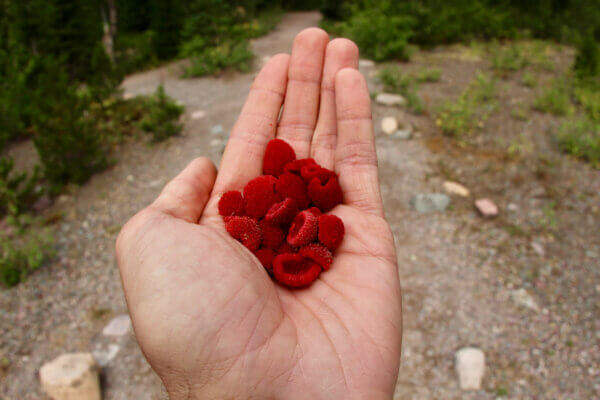
Thimbleberry is an upright, deciduous, suckering shrub that reaches 4-8 feet at maturity. The shrubs grow in large clumps spread by underground rhizomes and seeds carried by birds and wildlife. Stems present a gray, flaking bark.
Flowers grow on 3-7 inch terminals in flat-topped clusters. The creamy white flowers are delicately scented. Flowers appear in late spring, normally May through June.
Soft, velvety leaves are a deep green color with a pale undertone. In autumn, the leaves turn brilliant shades of orange and maroon. The thimbleberry shrubs develop fleshy, dark red drupelets in a thimble-like coherent of aggregate fruit. The fruits are juicy, tart, and delicious when ripe.
The berries are somewhat larger, juicier, flatter, and fuzzier than a raspberry. Although they’re similar, wild red raspberries have much smaller flowers and a thorny, prickly stem.
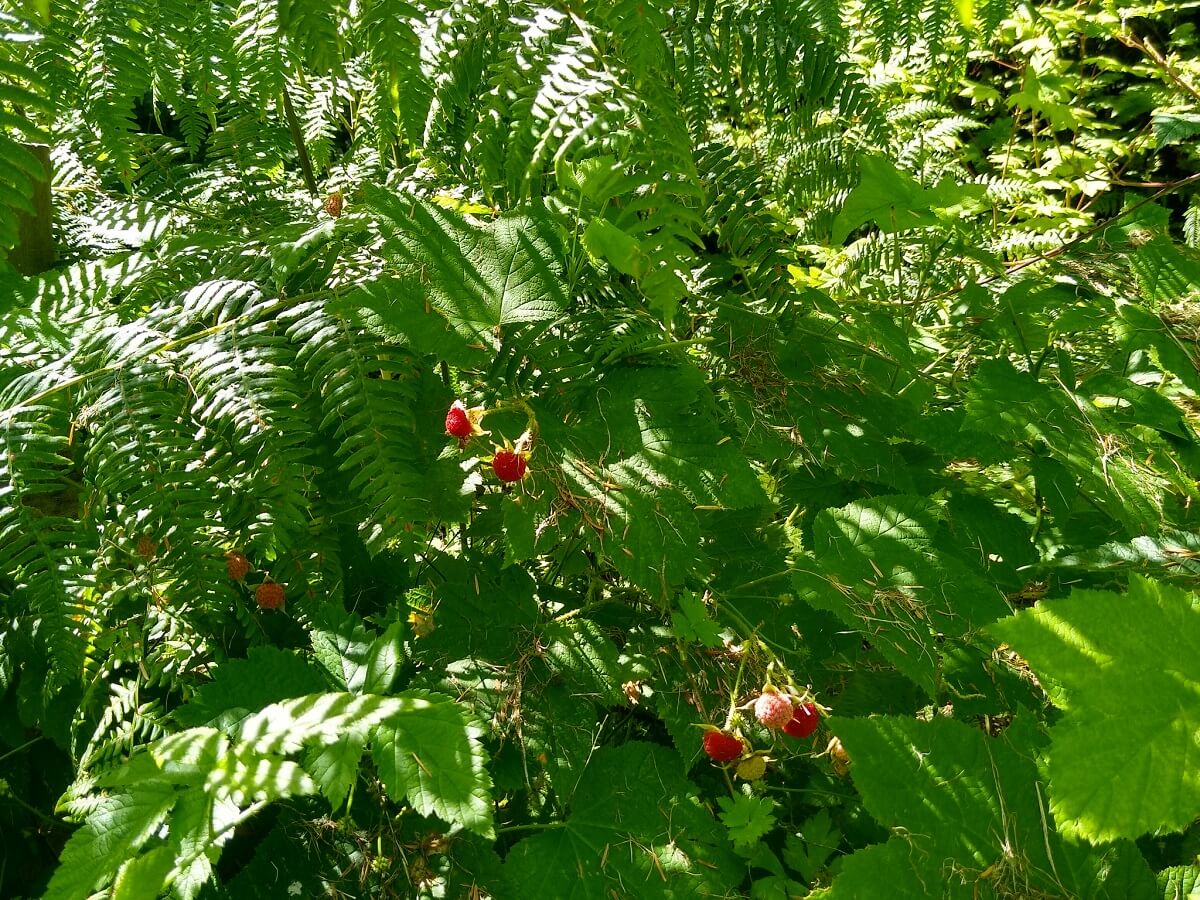
Thimbleberries are very juicy and fall apart. They do not ship well and are not cultivated or harvested commercially. They are a special treat when you discover a thicket while on a walk in the forest.
However, you will have to be quick to harvest them at their peak of ripeness. When the thimbleberries are ripe, they attract bees, birds, and other wildlife that feast on the sweet fruit. Black bears, fattening up for winter hibernation, can clean out a thimbleberry patch in a matter of minutes.
Thimbleberry seeds are stimulated by heat and sprout vigorously in recently burned forested areas. In the Pacific Northwest, the thimbleberry is one of the first plants to re-establish in recently burned areas scorched by wildfires.
The fast-growing thimbleberry flourishes in USDA hardiness zones 2 through 4. Thimbleberry grows best in loamy, well-drained soil in a sunny or lightly shaded location. Dense thickets of thimbleberry bushes provide food and habitat for birds, rodents, and other small wildlife. When picking thimbleberries in the wild, only pick from patches of established bushes that are large enough to support harvesting.
Cultivating Thimbleberries In The Homestead Garden
Thimbleberries are a delightful addition to the homestead landscape growing along fence lines or at the edge of a forested grove. Thimbleberries flourish in the same soils and growing conditions as blackberries and raspberries.
Thimbleberry canes have no thorns, develop from buds, and from shoots that spring forth from the ground. The hardy shrub is a fast grower, producing fruit by the second year. The delicate white or pink flowers present in clusters of 3 to 6 flowers.
The thimbleberry is not a true berry, but rather an aggregate fruit that turns pink and then red upon maturity. The fruit presents as numerous drupelets around a small, central core. Thimbleberries are plumper, larger, and softer than raspberries or blackberries.
Thimbleberry plants are available for purchase online, from local home and garden centers, or may be harvested in the wild. When wild harvesting, dig up tender, young shoots in early spring and transplant as soon as possible.
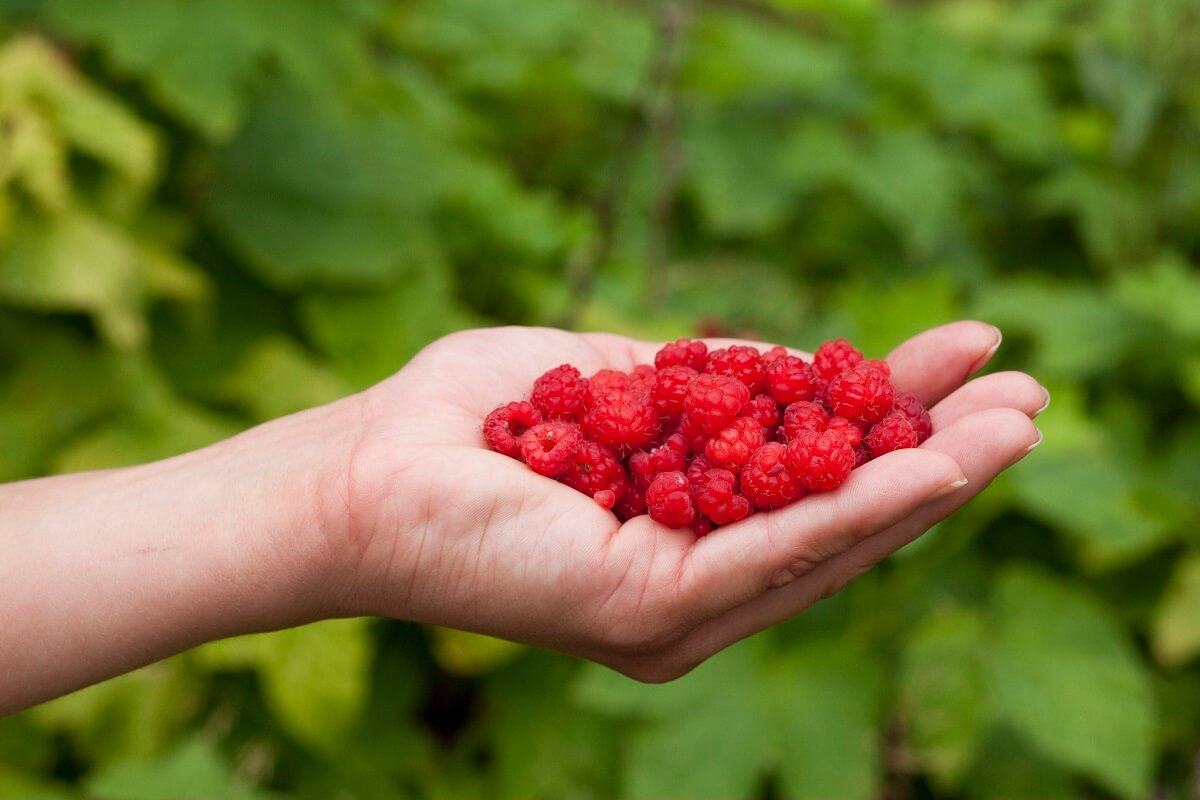
Thimbleberries cannot tolerate standing water, and the roots will rot in those areas. Many savvy homesteaders plant thimbleberries on open slopes or hills to control erosion and create a brilliant splash of eye-catching color. The large, maple tree-like leaves turn a bold, fiery orange after the first frost.
When planting, space thimbleberry root stocks 2-3 feet apart. Thimbleberry bushes grow to be 4-8 feet tall and 3-4 feet wide, so give plants plenty of room. Thimbleberry bushes present brilliant fall foliage and are often planted as a landscape ornament. The sweet and succulent berries are simply a savory bonus!
When pruning your thimbleberry patch, be sure to retain the older canes. Unlike other cane plants, thimbleberries produce the best yields on mature canes that are 2-3 years old. While the butterfly- and bee-attracting plant can grow in almost any soil, enhance the soil before planting with well-aged herbivore manure. Doing so encourages vigorous flower and berry production.
Medicinal Properties
Native American tribal healers used all the parts of the plant for their medicinal properties. Montana Plant Life reports that the leaves are used as a purifying, astringent blood tonic.
Today, thimbleberries can be used in a few different ways as an alternative medicine for a wide variety of ailments.
Thimbleberry Tea
A tea brewed from fresh or dried thimbleberry leaves can be used as a remedy for a whole host of ailments. Historically, the tea was used as a pain reliever for women with long menstrual periods. Here is a list of just some of the aches and pains that thimbleberry tea can relieve:
- Calms nausea and stops vomiting
- Treats stomach and intestinal distress including dysentery, diarrhea, and bleeding ulcers
- Alleviates anemia
- Reduces water retention
In addition, a tea of leaves and shoots can be taken to help gain weight. The fragrant tea is also useful for patients suffering from physical decline or wasting syndrome. An ingredient present in the shoots causes the stomach to contract and adds strength and tone to the stomach area.
The white blossoms are tasty raw or dried and can be added to a tea mixture. Thimbleberry tea is sumptuous hot or cold.
Crushed And Burned Leaves
Fresh, crushed leaves can be rubbed on the skin to relieve minor skin irritations and help heal acne eruptions.
When the leaves are burned, a poultice can be made from the ash. The poultice helps draw out the venom from spider bites while providing relief from the itching and burning of a diverse array of insect bites and stings. Burned, powdered leaves, applied to wounds, can also work to prevent scarring.
Thimbleberry Oil
Thimbleberry leaves, blended with a lightweight carrier oil (almond, olive, safflower, sunflower) are a time-tested homeopathic remedy to reduce swelling and inflammation. The oil should be applied liberally twice a day.
If you cannot find wild thimbleberries, many health foods stores online carry black raspberry pills, tinctures, and teas that offer similar health-promoting benefits.
Edible Parts of Thimbleberries
The fruit of the plant are sweet and tasty either raw, dried, or cooked. Thimbleberries make excellent jellies, jams, sauces, cobblers, pies, liquors, and wine. They are rather seedy but high in vitamin C and intensely flavorful. Fresh berries are a healthy snack high in antioxidants.
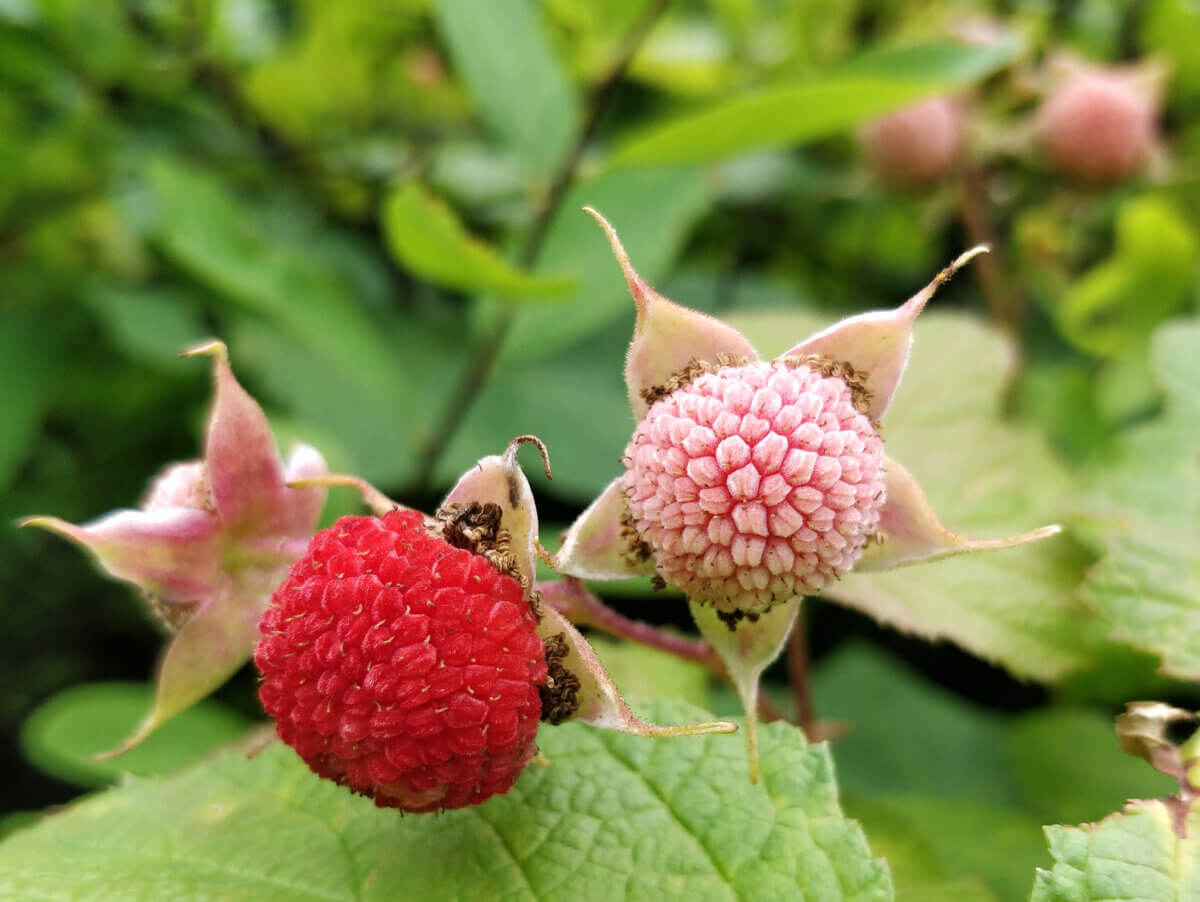
The young shoots of the plant are harvested in early spring. When it comes to harvesting, select shoots that are just starting to exhibit leaves.
- Peel and use raw in salads or an edible garnish.
- Steam or sauté the tender shoots as you would asparagus.
- Fresh shoots are also high in vitamin C and are used as an appetite stimulant.
Thimbleberry Recipes
Thimbleberry Dressing
Thimbleberry dressing is a delightful garnish to spring salad greens, fruit salads, and wild greens. As a note, when gathering wild greens, only pick greens sourced away from roadways where they could have been sprayed with chemical insecticides.
Ingredients
- 2 c. thimbleberries
- 2 tbsp. honey
- ½ c. extra virgin light olive oil
- ½ c. balsamic vinegar
- juice of one freshly squeezed lemon
- salt and pepper to taste
Instructions
- Puree all ingredients in a food processor at low speed.
- Taste and adjust seasons as needed.
- Try thimbleberry dressing drizzled over Cornish hens before baking. The dressing provides a tangy brown glaze and distinctive flavor to the birds. At our house, this dish served with garlic-mashed potatoes and fresh garden peas is a family favorite.
Thimbleberry Sauce
Serve thimbleberry sauce over pancakes, waffles, french toast, or vanilla ice cream and pound cake.
Ingredients
- 2 c. thimbleberries
- ½ c. raw honey
- 1 tbsp. butter
- 1 tsp. cinnamon
- ½ tsp. freshly grated cardamom seed
- ¼ c. crystallized candied ginger
Instructions
- Puree all ingredients.
- Simmer puree in a double boiler over medium heat until mixture is translucent and slightly thickened.
- Cool before refrigerating or hot pack in canning jars.
- Seal and enjoy a taste of summer when the cold winds blow in winter.
References:
- Thimbleberry, Montana Field Guide
- Thimbleberry, United States Forest Service
- Traditional Foods In Native America, United States Department of Health and Human Services




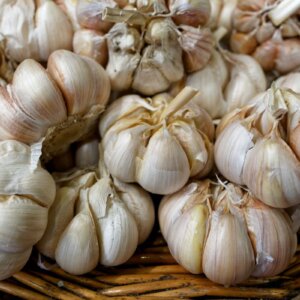


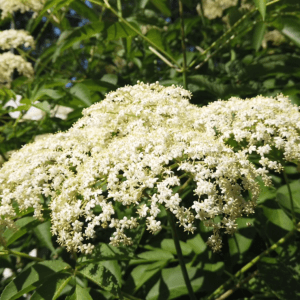

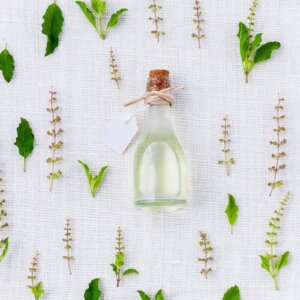

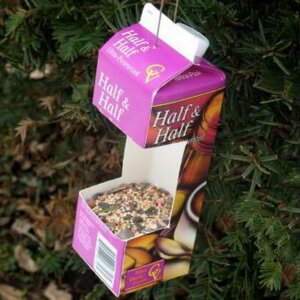
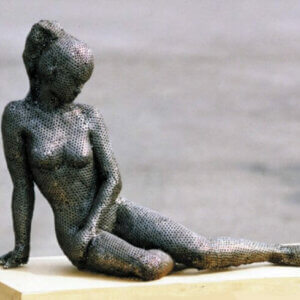
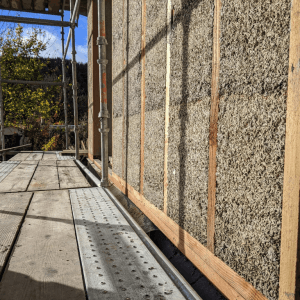

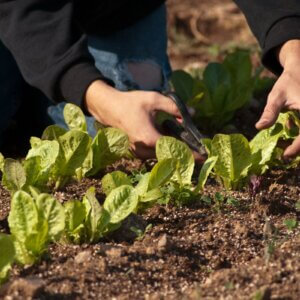



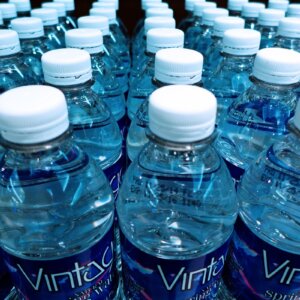
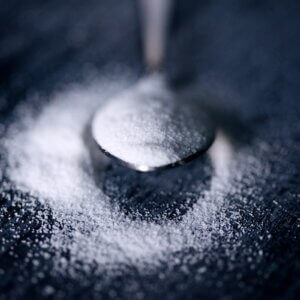
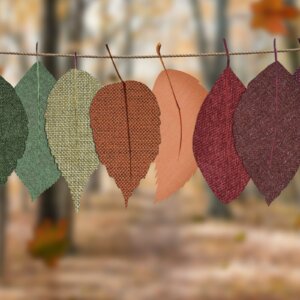



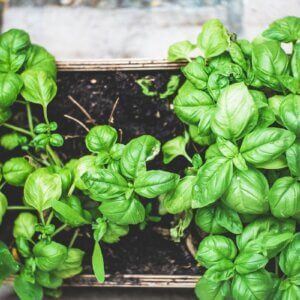




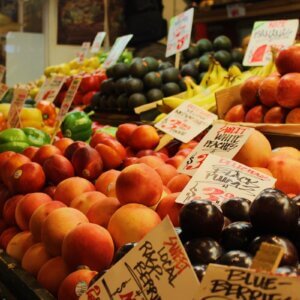





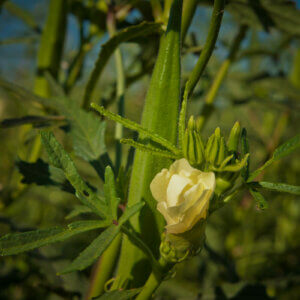





You might want to be aware, the 2nd photo you have shown here is not a thimbleberry, but a strawberry.
🙂
I did enjoy the read!!!
I’m glad you enjoyed the article! Thanks for the heads up about the picture!
Thanks for the article! One question: when you say “retain older canes” when pruning, do you mean don’t prune them at all, or prune just the edges for shape (as opposed to pruning down to 6 inches like the new growth)?
Trying to grow them in the UK anyone got any good hints for me to help me produce and I’ve got five seats
Last two pictures are salmonberry. Definitely not the same. Something you only eat if you are really hungry.
Hi Kelly,
Thanks for the note! I updated those photos.
Leigha
Salmonberry and thimbleberry are actually different things, not interchangeable and have differing Latin names. Salmonberry is Rubus Spectabilis vs Thimbleberry being Rubus Parviflorus. I grew up picking them both in the PNW 🙂
I grew up in the Northwest. Salmonberry bushes vary widely – some are very flavorful, delicious, and sweet while others are bland and nearly tasteless (and it does not depend on location – one tasteless berry bush may be right next to a delicious flavorful bush.
Thimbleberry (Rubus parviflorus) and Salmonberry (Rubus spectabilis) are related but they are entirely different berries.
Wonderful article! I really enjoyed reading about the medicinal properties. I have been blessed to have a bunch volunteer in my yard this year.
Just so you know, one photo by Robert Emperley in here is actually of raspberries, not thimbleberries. 🙂